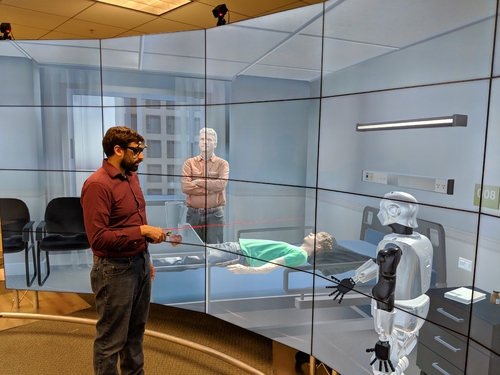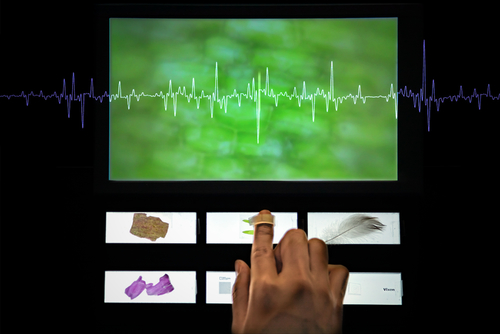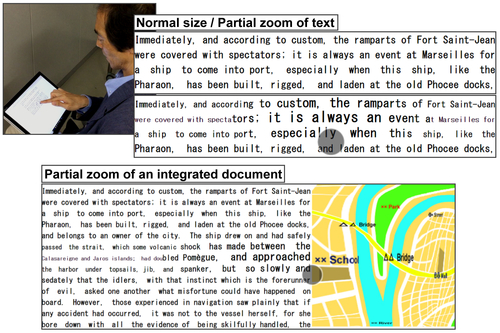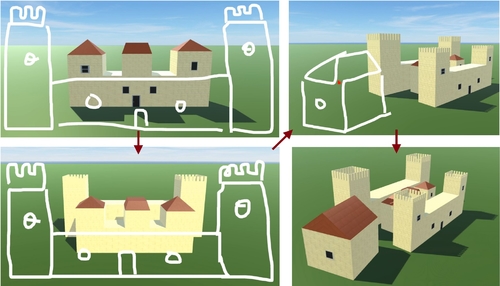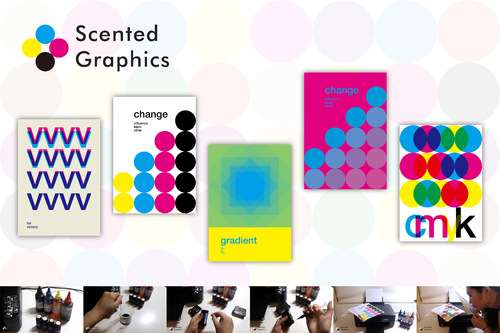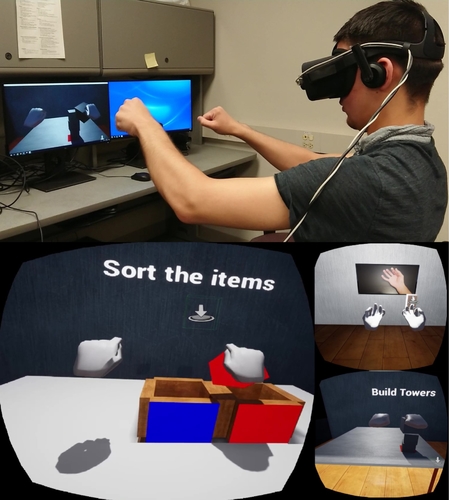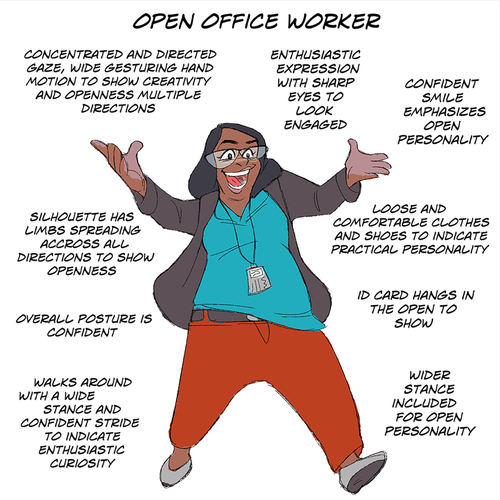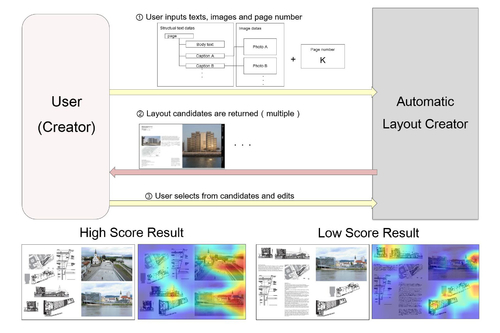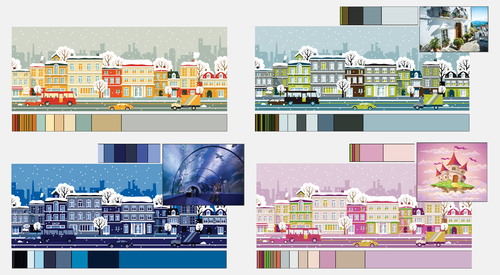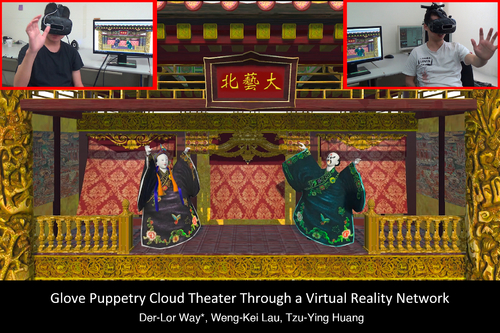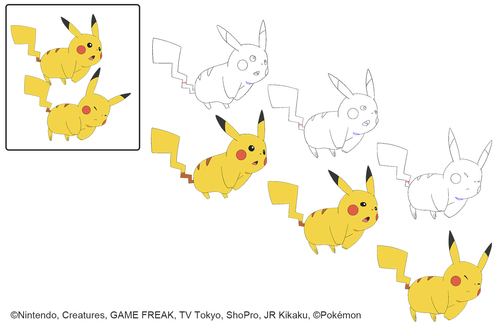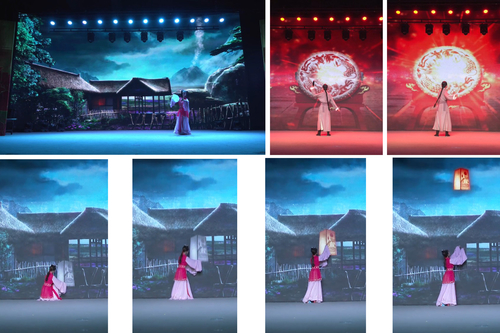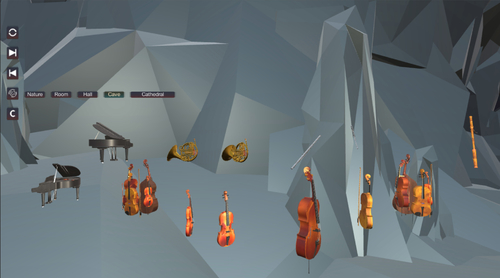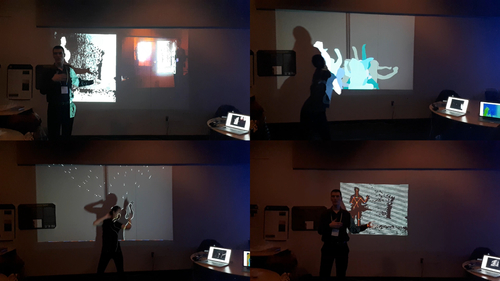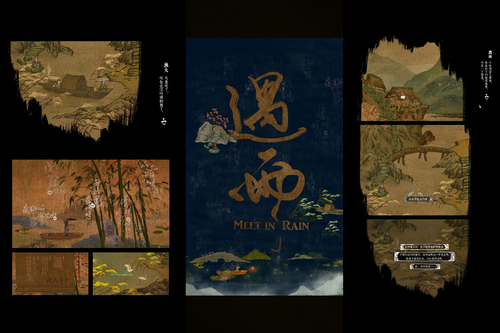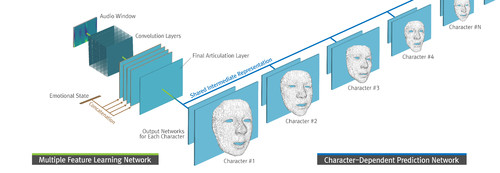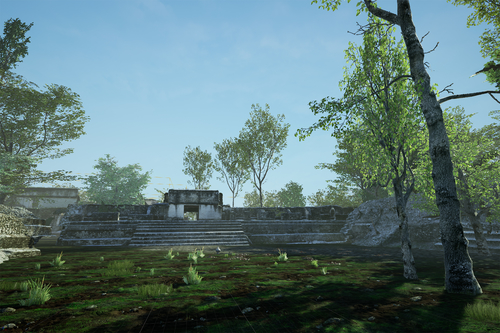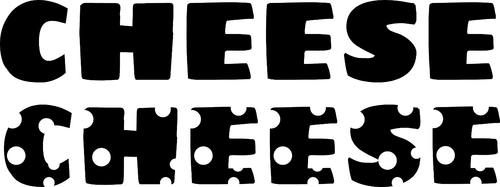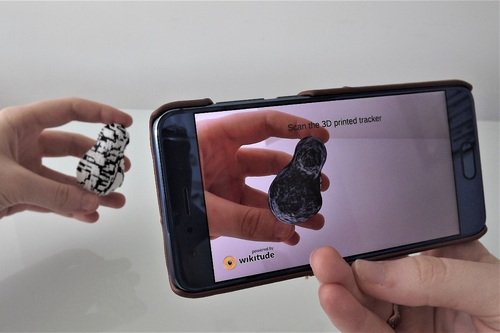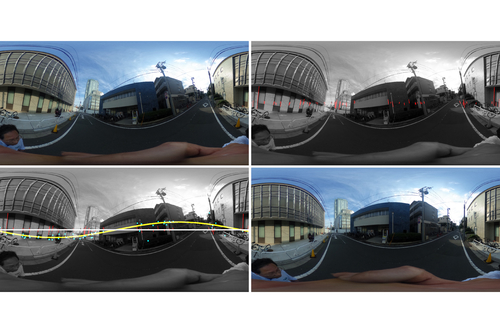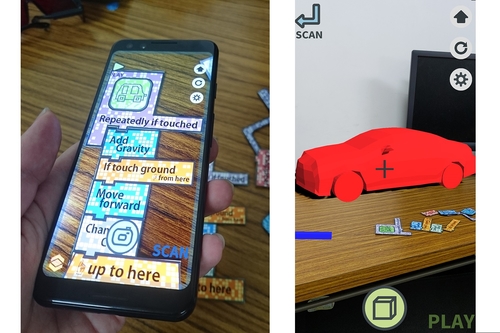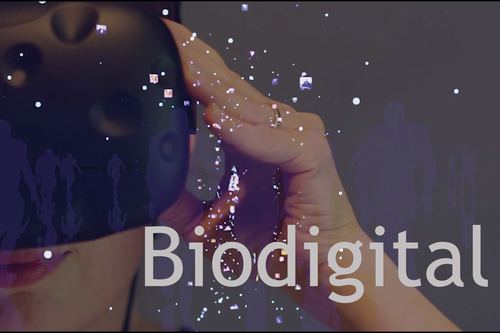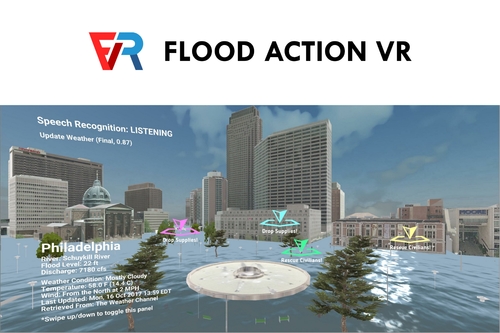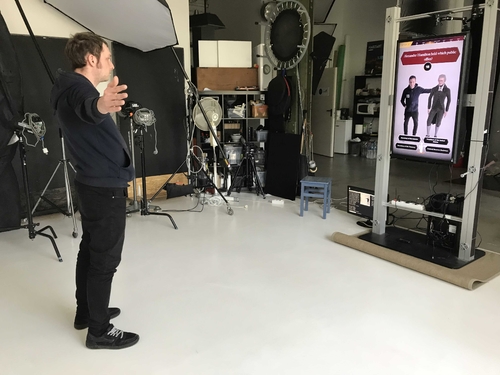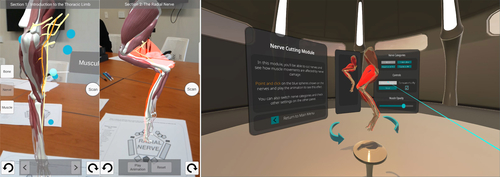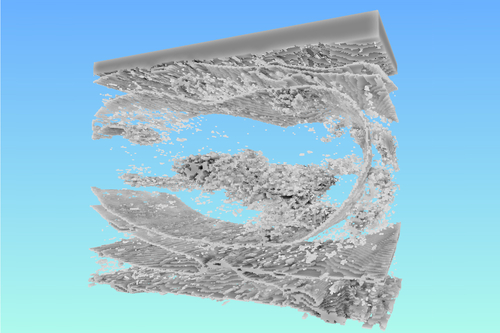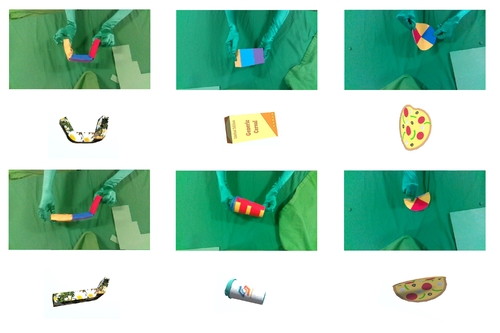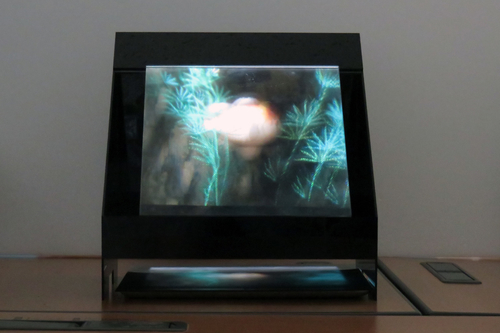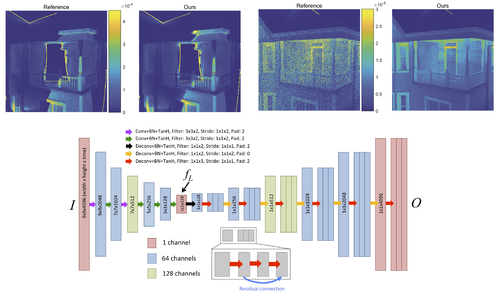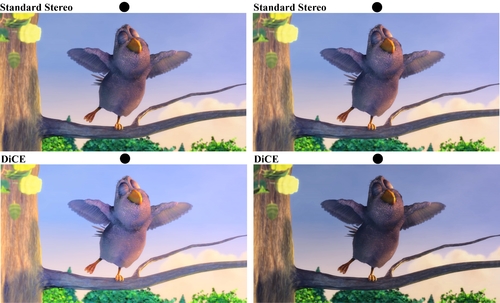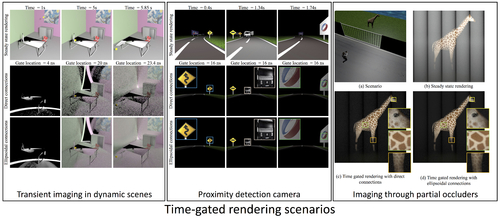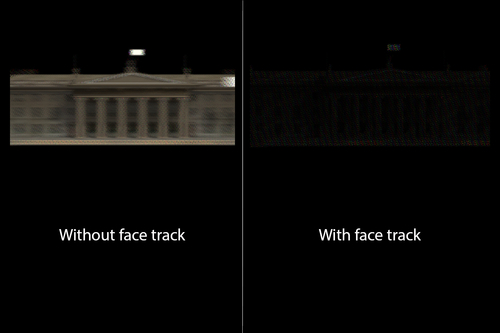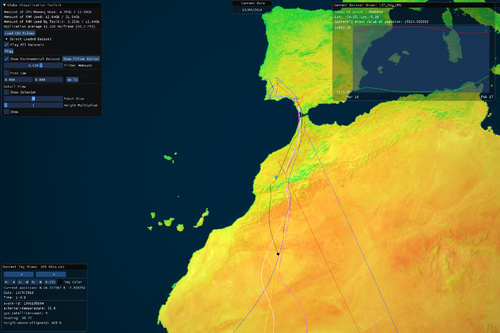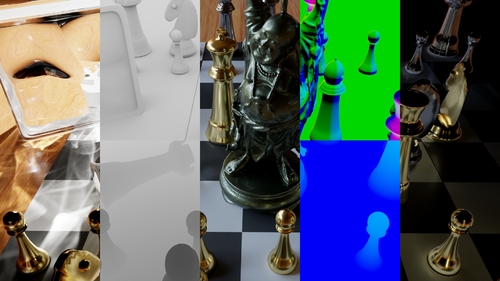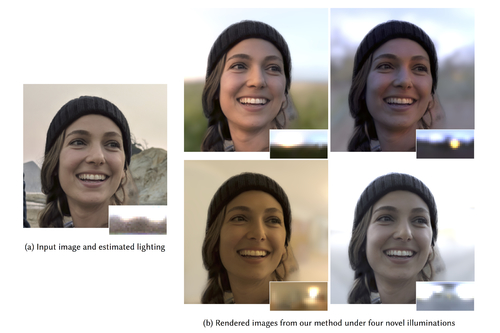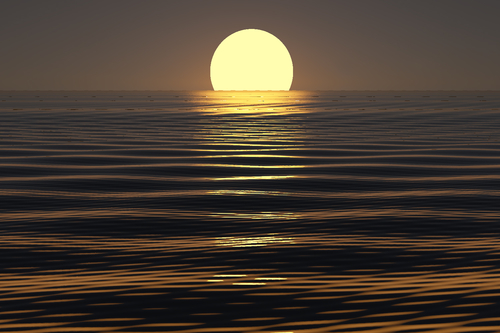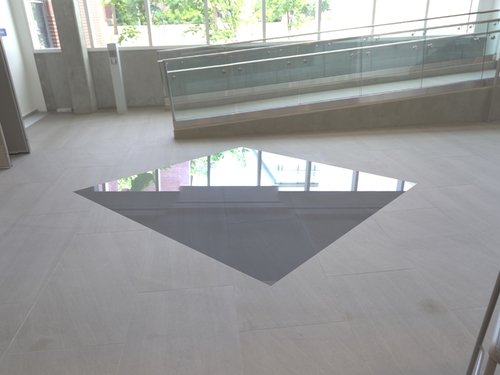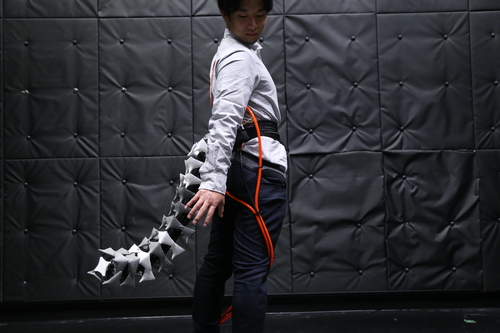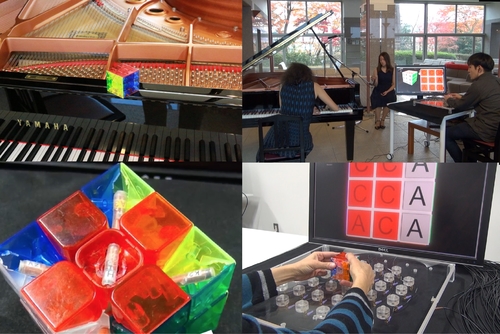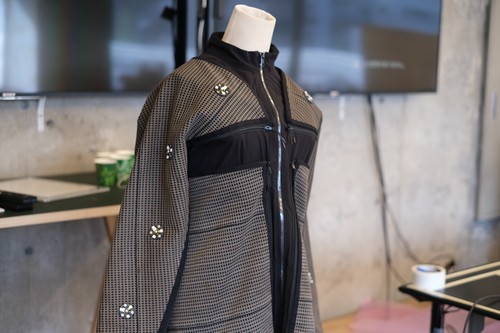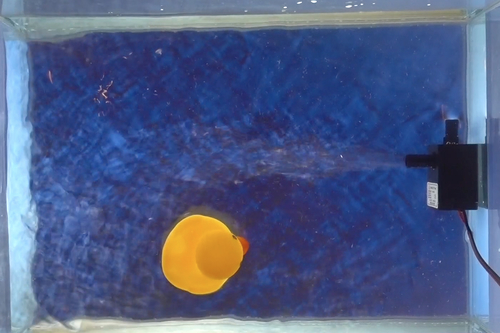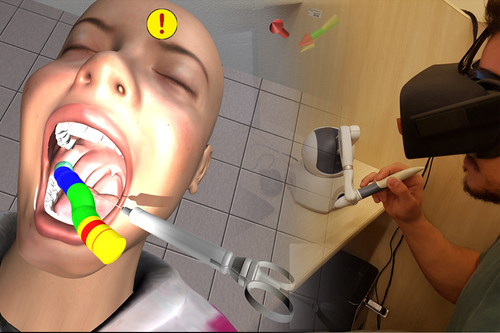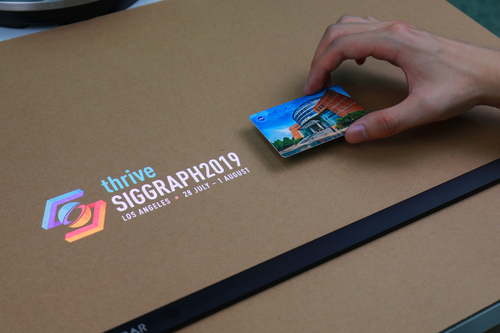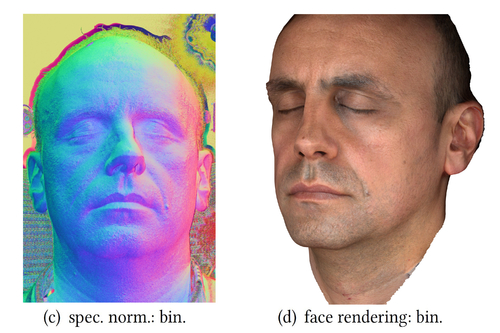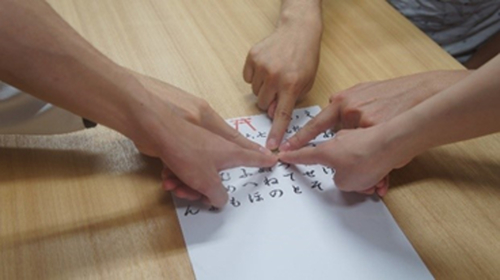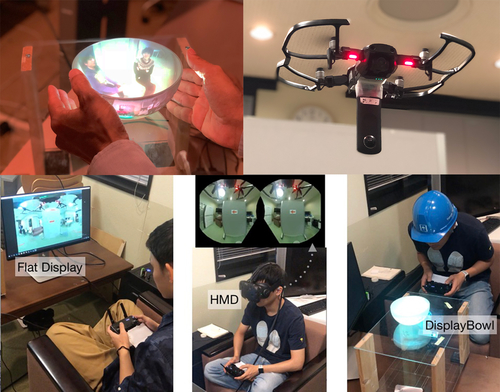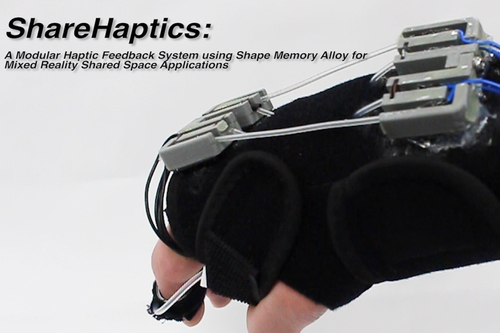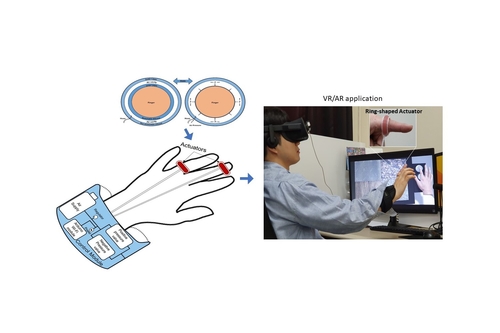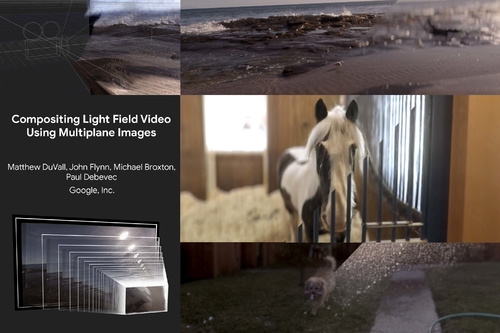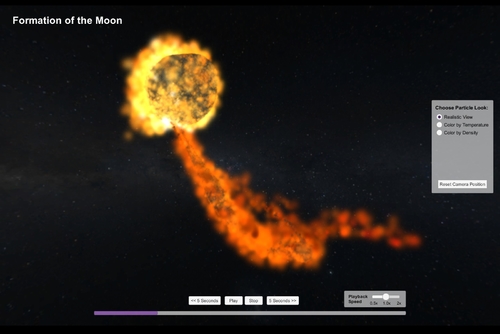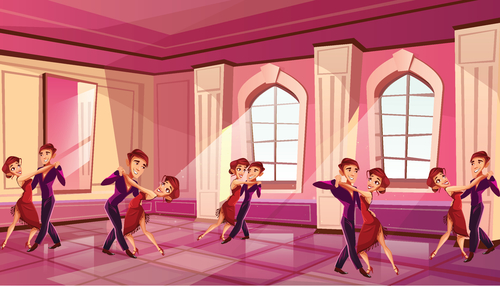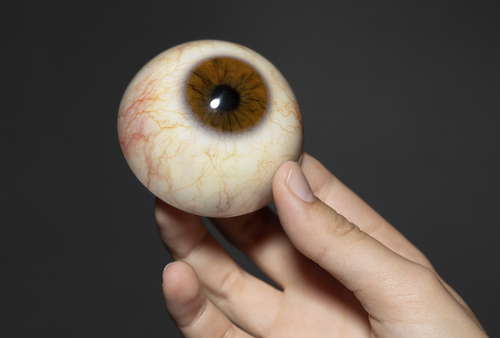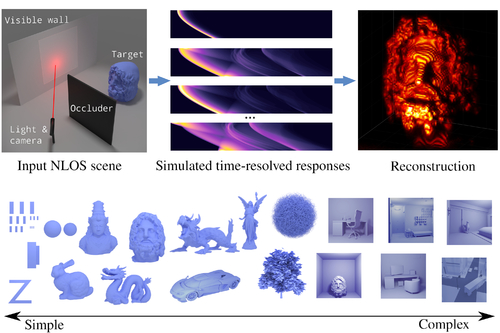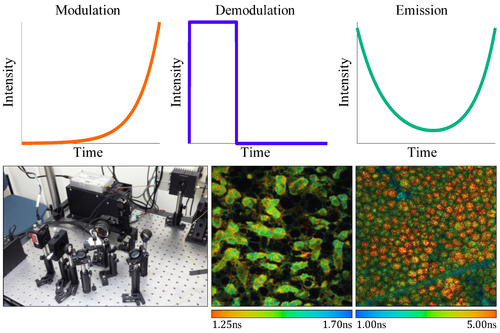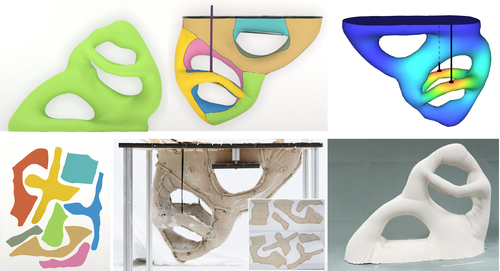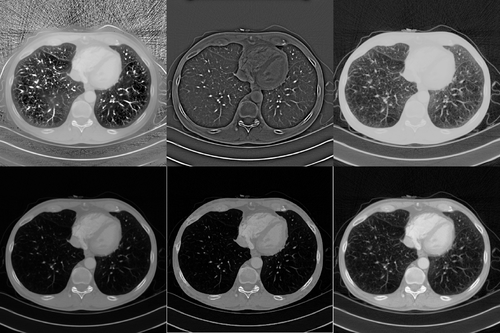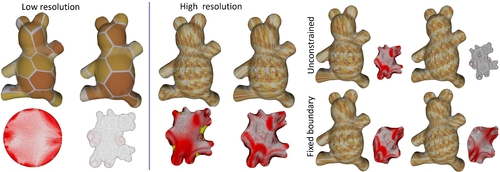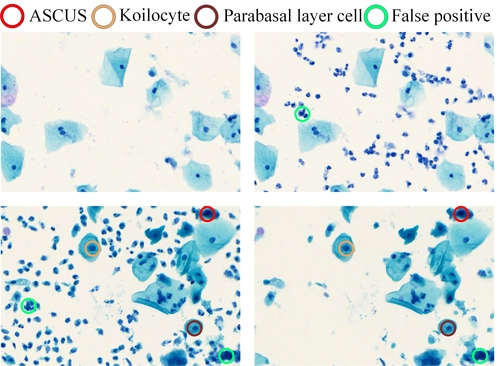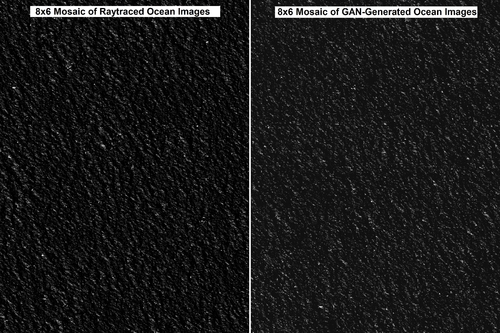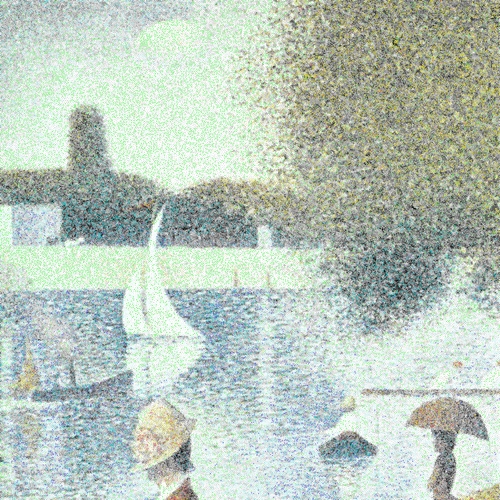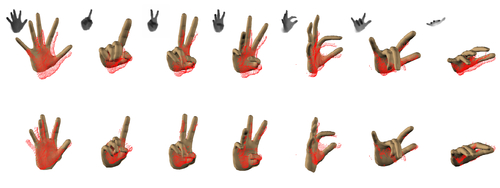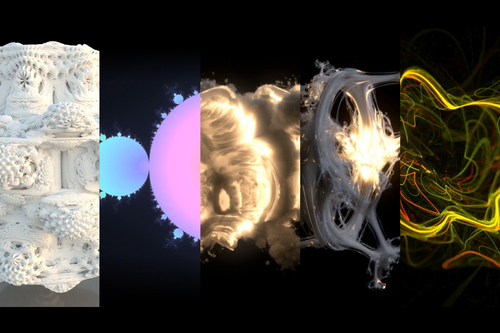Poster
:
73. A Dataset for Benchmarking Time-Resolved Non-Line-of-Sight Imaging
SessionResearch
Photography and Recording Policies
TimeSunday, 28 July 20191:30pm - 5:30pm


LocationSouth Hall J
DescriptionPOSTER SESSIONS: MONDAY, 29 JULY and TUESDAY, 30 JULY, 12:15-1:15 PM
Time-resolved imaging has made it possible to look around corners by exploiting information from diffuse light bounces, but so far, it has only been proven to work in very simple scenarios. We present a public dataset of complex synthetic time-resolved non-line-of-sight scenes aimed at benchmarking reconstructions in real-world scenarios.
Contributors
Miguel Galindo
Universidad de Zaragoza, I3A
Julio Marco
Universidad de Zaragoza, I3A
Matthew O'Toole
Carnegie Mellon University
Gordon Wetzstein
Stanford University
Diego Gutierrez
Universidad de Zaragoza, I3A
Adrian Jarabo
Universidad de Zaragoza, I3A
Poster
:
74. A Similarity Measure for Material Appearance
SessionResearch
Photography and Recording Policies
TimeSunday, 28 July 20191:30pm - 5:30pm


LocationSouth Hall J
DescriptionPOSTER SESSIONS: MONDAY, 29 JULY and TUESDAY, 30 JULY, 12:15-1:15 PM
We present a deep learning-based model to measure the similarity in appearance between different materials, which correlates with human similarity judgments. Our evaluation shows that our model outperforms existing metrics. Last, we demonstrate several applications enabled by our metric, including appearance-based search for material suggestions, database visualization, clustering and summarization, and gamut mapping.
Contributors
Manuel Lagunas
Universidad de Zaragoza
Sandra Malpica
Universidad de Zaragoza
Ana Serrano
Universidad de Zaragoza
Elena Garces
Universidad de Zaragoza
Diego Gutierrez
Universidad de Zaragoza
Belen Masia
Universidad de Zaragoza
Poster
:
75. Affine Interpolation in a Lie Group Framework
SessionResearch
Photography and Recording Policies
TimeSunday, 28 July 20191:30pm - 5:30pm


LocationSouth Hall J
DescriptionPOSTER SESSIONS: MONDAY, 29 JULY and WEDNESDAY, 31 JULY, 12:15-1:15 PM
An interpolation framework based on a Lie group representation of the affine transformation is proposed, which, while preserving several interpolation properties, also ensures an interpolation in all of the cases.
Contributors
Sumukh Bansal
Dhirubhai Ambani Institute of Information and Communication Technology Gandhinagar
Aditya Tatu
Dhirubhai Ambani Institute of Information and Communication Technology Gandhinagar
Poster
:
76. An Adaptive Variational Finite Difference Framework for Efficient Symmetric Octree Viscosity
SessionResearch
Photography and Recording Policies
TimeSunday, 28 July 20191:30pm - 5:30pm


LocationSouth Hall J
DescriptionPOSTER SESSIONS: MONDAY, 29 JULY and WEDNESDAY, 31 JULY, 12:15-1:15 PM
We present a convergent variational discretization strategy for fluid viscosity on octree grids that ensures symmetric, positive, definite linear systems and offers close to an order of magnitude performance improvement.
Contributors
Ryan Goldade
University of Waterloo
Yipeng Wang
University of Waterloo
Mridul Aanjaneya
Rutgers University
Christopher Batty
University of Waterloo
Poster
:
77. Coding Scheme Optimization for Fast Fluorescence Lifetime Imaging
SessionResearch
Photography and Recording Policies
TimeSunday, 28 July 20191:30pm - 5:30pm


LocationSouth Hall J
DescriptionPOSTER SESSIONS: MONDAY, 29 JULY and TUESDAY, 30 JULY, 12:15-1:15 PM
We design novel and high-performance coding schemes for fast fluorescence lifetime imaging that achieve up to an order of magnitude shorter acquisition time as compared to existing approaches.
Contributor
Jongho Lee
University of Wisconsin-Madison
Poster
:
78. Computational Design of Fabric Formwork
SessionResearch
Photography and Recording Policies
TimeSunday, 28 July 20191:30pm - 5:30pm


LocationSouth Hall J
DescriptionPOSTER SESSIONS: TUESDAY, 30 JULY and WEDNESDAY, 31 JULY, 12:15-1:15 PM
We present an inverse design tool for fabric formwork – a process where flat panels are sewn together to form a fabric container for casting a plaster sculpture. Our computational framework generates optimized flat panels and fabrication orientation with reference to a target shape, and determines effective locations for external supports. We demonstrate the function of this design tool on a variety of models with different shapes and topology. Physical fabrication is also demonstrated to validate our approach.
Contributors
Xiaoting Zhang
Boston University
Guoxin Fang
Delft University of Technology
Gwenda Gieseler
Delft University of Technology
Charlie Wang
The Chinese University of Hong Kong
Emily Whiting
Boston University
Poster
:
79. Content-Aware Generative Modeling of Graphic Design Layouts
SessionResearch
Photography and Recording Policies
TimeSunday, 28 July 20191:30pm - 5:30pm


LocationSouth Hall J
DescriptionPOSTER SESSIONS: TUESDAY, 30 JULY and WEDNESDAY, 31 JULY, 12:15-1:15 PM
We present a content-aware deep generative model of graphic design layouts, which is able to synthesize high-quality, professional layouts based on the contents of input images and text.
Contributors
Xinru Zheng
City University of Hong Kong
Xiaotian Qiao
City University of Hong Kong
Ying Cao
City University of Hong Kong
Rynson Lau
City University of Hong Kong
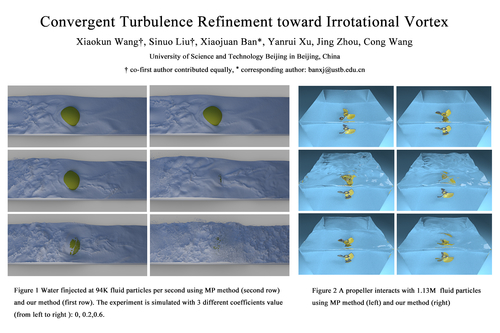
Poster
:
80. Convergent Turbulence Refinement Toward Irrotational Vortex
SessionResearch
Photography and Recording Policies
TimeSunday, 28 July 20191:30pm - 5:30pm


LocationSouth Hall J
DescriptionPOSTER SESSIONS: MONDAY, 29 JULY and WEDNESDAY, 31 JULY, 12:15-1:15 PM
We proposed a detail refinement method to enhance the visual effect of turbulence in irrotational vortex. We restore the missing angular velocity from the particles and convert them into linear velocity to recover turbulent detail due to numerical disspation. Vorticity field is employed to approximate angular velocity which is fed back to the velocity field using the irrotational vortex model.
Contributors
Xiaokun Wang
University of Science and Technology Beijing
Beijing Advanced Innovation Center for Materials Genome Engineering
Sinuo Liu
University of Science and Technology Beijing
Beijing Advanced Innovation Center for Materials Genome Engineering
Xiaojuan Ban
University of Science and Technology Beijing
Beijing Advanced Innovation Center for Materials Genome Engineering
Yanrui Xu
University of Science and Technology Beijing
Beijing Advanced Innovation Center for Materials Genome Engineering
Jing Zhou
University of Science and Technology Beijing
Beijing Advanced Innovation Center for Materials Genome Engineering
Cong Wang
University of Science and Technology Beijing
Beijing Advanced Innovation Center for Materials Genome Engineering
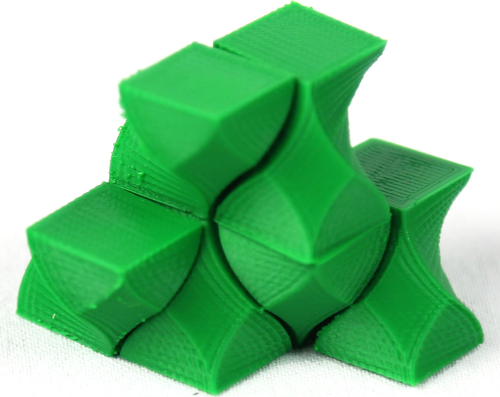
Poster
:
81. Delaunay Lofts: A New Class of Space-Filling Shapes
SessionResearch
Photography and Recording Policies
TimeSunday, 28 July 20191:30pm - 5:30pm


LocationSouth Hall J
DescriptionPOSTER SESSIONS: MONDAY, 29 JULY and TUESDAY, 30 JULY, 12:15-1:15 PM
This is an approach to construct and design a new class of space-filling shapes. The approach is based on interpolation of a stack of planar tiles whose dual tilings are Delaunay diagrams. Control curves that interpolate Delaunay vertices are constructed. Voronoi decomposition of the volume using these control curves as Voronoi sites gives us lofted interpolation of original polygons in planar tiles. This, combined with the use of wallpaper symmetries, allows for the design of space-filling shapes in three-space.
INVITED TO THE FIRST ROUND OF THE STUDENT RESEARCH COMPETITION
Contributors
Sai Ganesh Subramanian
Texas A&M University
Matthew R. Eng
Texas A&M University
Vinayak Krishnamurthy
Texas A&M University
ERGUN Akleman
Texas A&M University
Texas A&M University

Poster
:
82. Effectiveness of Facial Animated Avatar and Transformed Voice in eLearning Programming Course
SessionResearch
Photography and Recording Policies
TimeSunday, 28 July 20191:30pm - 5:30pm


LocationSouth Hall J
DescriptionPOSTER SESSIONS: MONDAY, 29 JULY and TUESDAY, 30 JULY, 12:15-1:15 PM
This article reports the effectiveness of facial animated avatar and transformed voice in eLearning programming courses. It tests three (real male professor, male avatar, female avatar) visuals with voice (original male voice, transformed) by a VT-4 vocoder. It tested in 15 groups by 186 students. Female-type avatar was the most visually appealing avatar; its combination with voice transformation severely hinders its overall score. This research can be extended to real-time live with preferences of students and draw more connections between student perception of avatars and actual lecturers.
Contributors
Rex Hsieh
Kanagawa Institute of Technology
Akihiko Shirai
GREE, Inc.
GREE VR Studio Lab
Hisashi Sato
Kanagawa Institute of Technology
Poster
:
83. Enhancement of CT Images for Visualization
SessionResearch
Photography and Recording Policies
TimeSunday, 28 July 20191:30pm - 5:30pm


LocationSouth Hall J
DescriptionPOSTER SESSIONS: MONDAY, 29 JULY and TUESDAY, 30 JULY, 12:15-1:15 PM
Modern medical science depends on imaging technologies for an accurate diagnosis. Medical images require post-processing – like edge and contrast enhancement and noise removal – for visualization. We proposed a divisive clustering-based contrast enhancement technique for computed tomography (CT) images. Our algorithm efficiently enhances both low- and high-intensity regions and preserves the edges very well.
Contributors
Anam Mehmood
University of Eng. & Technology Taxila
Ishtiaq Rasool Khan
University of Jeddah
Hassan Dawood
University of Eng. & Technology Taxila
Hussain Dawood
University of Jeddah
Poster
:
84. KleinPAT: Optimal Mode Conflation for Time-Domain Precomputation of Acoustic Transfer
SessionResearch
Photography and Recording Policies
TimeSunday, 28 July 20191:30pm - 5:30pm


LocationSouth Hall J
DescriptionPOSTER SESSIONS: MONDAY, 29 JULY and TUESDAY, 30 JULY, 12:15-1:15 PM
We propose KleinPAT - a blazingly fast acoustic transfer solver that generates high-quality, rigid-body sound models in a matter of minutes rather than days (>2,000x speedup achieved) using a novel "conflate-simulate-deconflate" algorithm and an optimized GPU implementation.
Contributors
Jui-Hsien Wang
Stanford University
Doug L. James
Stanford University
Poster
:
85. Luminance-Contrast-Aware Foveated Rendering
SessionResearch
Contributors
Elena Arabadzhiyska-Koleva
Photography and Recording Policies
TimeSunday, 28 July 20191:30pm - 5:30pm


LocationSouth Hall J
DescriptionPOSTER SESSIONS: TUESDAY, 30 JULY and WEDNESDAY, 31 JULY, 12:15-1:15 PM
We present a new foveated-rendering technique that improves the perceived quality and rendering cost by adjusting the amount of quality degradation according to the underlying content.
Contributors
Okan Tarhan Tursun
Max Planck Institute for Informatics
Elena Arabadzhiyska-Koleva
Saarland University, MMCI
Max Planck Institute for Informatics
Marek Wernikowski
West Pomeranian University of Technology
Radosław Mantiuk
West Pomeranian University of Technology
Hans-Peter Seidel
Max Planck Institute for Informatics
Karol Myszkowski
Max Planck Institute for Informatics
Piotr Didyk
Università della Svizzera italiana
Poster
:
86. Mixing Sauces: A Viscosity Blending Model for Shear Thinning Fluids
SessionResearch
Photography and Recording Policies
TimeSunday, 28 July 20191:30pm - 5:30pm


LocationSouth Hall J
DescriptionPOSTER SESSIONS: MONDAY, 29 JULY and WEDNESDAY, 31 JULY, 12:15-1:15 PM
We propose a nonlinear blending model for describing the measured flowing properties of mixtures of shear thinning fluids, whose behaviors can be different from their constituents alone.
Contributors
Kentaro Nagasawa
The University of Tokyo
Takayuki Suzuki
The University of Tokyo
Ryohei Seto
Kyoto University
Masato Okada
The University of Tokyo
Yonghao Yue
The University of Tokyo
Aoyama Gakuin University
Poster
:
87. Multi-Resolution Approach to Computing Locally Injective Maps on Meshes
SessionResearch
Photography and Recording Policies
TimeSunday, 28 July 20191:30pm - 5:30pm


LocationSouth Hall J
DescriptionPOSTER SESSIONS: MONDAY, 29 JULY and WEDNESDAY, 31 JULY, 12:15-1:15 PM
In this work, we propose a multi-resolution approach to the construction of injective maps with low distortions on meshes. We initialize the induced optimization problem with the solution of the same problem in a lower resolution. Our main focus is the multi-resolution surface parametrization. We overcome the non-injective initialization obstacle, often occurring during transitions between multiple resolutions, by simultaneously repairing inverted elements, minimizing geometric distortions, and employing the proposed embedding optimization techniques.
Contributors
Alexander Naitsat
Technion
Yehoshua Y. Zeevi
Technion
Poster
:
88. Noise Reduction With Image Inpainting: An Application in Clinical Data Diagnosis
SessionResearch
Photography and Recording Policies
TimeSunday, 28 July 20191:30pm - 5:30pm


LocationSouth Hall J
DescriptionPOSTER SESSIONS: TUESDAY, 30 JULY and WEDNESDAY, 31 JULY, 12:15-1:15 PM
We design a novel model to detect and remove the false positives in clinical images to offer better assistance to both computer-aided methods and human experts. The automatic detection of cervical cancer is used as a case study and experimentally shows the effectiveness.
Contributors
Jing Ke
Shanghai Jiao Tong University
University of New South Wales
Junwei Deng
Shanghai Jiao Tong University
University of Michigan
Yizhou Lu
Shanghai Jiao Tong University
Poster
:
89. OceanGAN: A Deep Learning Alternative to Physics-Based Ocean Rendering
SessionResearch
Photography and Recording Policies
TimeSunday, 28 July 20191:30pm - 5:30pm


LocationSouth Hall J
DescriptionPOSTER SESSIONS: TUESDAY, 30 JULY and WEDNESDAY, 31 JULY, 12:15-1:15 PM
This work proposes using generative adversarial networks (GANs) as an alternative to physics-based raytracing for rendering large ocean scenes with ambient breaking waves. The GAN-generated ocean imagery was generated nearly an order of magnitude faster than raytracing, and the results were successfully validated against raytraced imagery in the spectral domain.
Contributors
Christopher R. Ratto
The Johns Hopkins University Applied Physics Laboratory
Mimi Szeto
The Johns Hopkins University Applied Physics Laboratory
David M. Slocum
The Johns Hopkins University Applied Physics Laboratory
Kevin A. Del Bene
The Johns Hopkins University Applied Physics Laboratory
Poster
:
90. Physically Based Statistical Simulation of Rain Sound
SessionResearch
Photography and Recording Policies
TimeSunday, 28 July 20191:30pm - 5:30pm


LocationSouth Hall J
DescriptionPOSTER SESSIONS: MONDAY, 29 JULY and TUESDAY, 30 JULY, 12:15-1:15 PM
This paper proposes an efficient scheme for rendering rain sounds in 3D virtual environments with perceptually salient near-field effects using a novel-proposed, physically-based statistical simulation method.
Contributors
Shiguang Liu
Tianjin University
Haonan Cheng
Tianjin University
Yiying Tong
Michigan State University
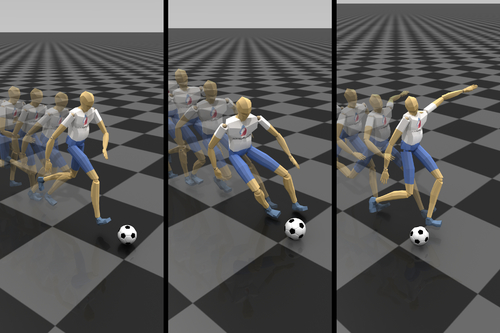
Poster
:
91. Physics-based Full-body Soccer Motion Control for Dribbling and Shooting
SessionResearch
Photography and Recording Policies
TimeSunday, 28 July 20191:30pm - 5:30pm


LocationSouth Hall J
DescriptionPOSTER SESSIONS: MONDAY, 29 JULY AND TUESDAY, 30 JULY, 12:15-1:15 PM
We present a novel motion control system that produces physically-correct full-body soccer motions: dribbling forward, dribbling to the side, and shooting. This system performs two tightly-coupled tasks: data-driven motion prediction and physics-based motion synthesis. The former synthesizes a reference motion and further refines the motion to make the character kick the ball at a right time and place. Provided with the reference motion, the latter then adopts a Model Predictive Control (MPC) framework to generate a physically-correct soccer motion, by solving an optimal control problem based on dynamics for a full-body character and the moving ball together with their interactions.
Contributors
Seokpyo Hong
Korea Advanced Institute of Science and Technology
Daseong Han
Handong Global University
Kyungmin Cho
Korea Advanced Institute of Science and Technology
Joseph S. Shin
Korea Advanced Institute of Science and Technology
Handong Global University
Junyong Noh
Korea Advanced Institute of Science and Technology
Poster
:
92. Real-Time Structure Aware Color Stippling
SessionResearch
Photography and Recording Policies
TimeSunday, 28 July 20191:30pm - 5:30pm


LocationSouth Hall J
DescriptionPOSTER SESSIONS: TUESDAY, 30 JULY and WEDNESDAY, 31 JULY, 12:15-1:15 PM
We have presented a color-stippling method using a color space thresholding strategy for pregenerated samples, which allow for the stippling editing with arbitrary input color vector.
Contributors
Lei Ma
Center on Frontiers of Computing Studies, Peking University
AICFVE, Beijing Film Academy
Hong Deng
Nanjing University of Science and Technology
Beibei Wang
Nanjing University of Science and Technology
Yanyun Chen
State Key Laboratory of Computer Science, Institute of Software, Chinese Academy of Sciences
Tamy Boubekeur
LTCI, Telecom ParisTech, Paris-Saclay University
Poster
:
93. RedMax: Efficient & Flexible Approach for Articulated Dynamics
SessionResearch
Photography and Recording Policies
TimeSunday, 28 July 20191:30pm - 5:30pm


LocationSouth Hall J
DescriptionPOSTER SESSIONS: MONDAY, 29 JULY and WEDNESDAY, 31 JULY, 12:15-1:15 PM
We propose an efficient and flexible approach that works in reduced/maximal coordinates with fully implicit two-way coupling of articulated and deformable bodies.
Contributors
Ying Wang
Texas A&M University
Nicholas J. Weidner
Texas A&M University
Margaret Baxter
Texas A&M University
Yura Hwang
Texas A&M University
Danny M. Kaufman
Adobe Research
Shinjiro Sueda
Texas A&M University
Poster
:
94. Semantic Photo Manipulation With a Generative Image Prior
SessionResearch
Photography and Recording Policies
TimeSunday, 28 July 20191:30pm - 5:30pm


LocationSouth Hall J
DescriptionPOSTER SESSIONS: TUESDAY, 30 JULY and WEDNESDAY, 31 JULY, 12:15-1:15 PM
We propose a method to enable semantic photo manipulation by using a generative adversarial network to generate semantic features like trees, windows, chairs, etc. Our method can accurately reconstruct a user-given input image and synthesize new content, consistent with the appearance of the input image.
Contributors
David Bau
MIT CSAIL
MIT-IBM Watson AI Lab
Hendrik Strobelt
IBM Research
MIT-IBM Watson AI Lab
William Peebles
MIT CSAIL
Bolei Zhou
Chinese University of Hong Kong
Antonio Torralba
MIT CSAIL
MIT-IBM Watson AI Lab
Poster
:
95. TileGAN: Synthesis of Large-Scale Non-Homogeneous Textures
SessionResearch
Photography and Recording Policies
TimeSunday, 28 July 20191:30pm - 5:30pm


LocationSouth Hall J
DescriptionPOSTER SESSIONS: MONDAY, 29 JULY and WEDNESDAY, 31 JULY, 12:15-1:15 PM
We tackle the problem of texture synthesis in the setting where many input images are given and a large-scale output is required. Building on recent generative adversarial networks, we propose: an algorithm to combine outputs of GANs trained on a smaller resolution to produce a large-scale plausible texture map with virtually no boundary artifacts; and a user interface to enable artistic control. Our quantitative and qualitative results showcase the generation of synthesized high-resolution maps consisting of up to hundreds of megapixels as a case in point.
Poster
:
96. Unsupervised Incremental Learning for Hand Shape and Pose Estimation
SessionResearch
Photography and Recording Policies
TimeSunday, 28 July 20191:30pm - 5:30pm


LocationSouth Hall J
DescriptionPOSTER SESSIONS: MONDAY, 29 JULY and TUESDAY, 30 JULY, 12:15-1:15 PM
The first unsupervised incremental learning method for refining hand shape and pose estimation obtained from a state-of-the-art hand tracking system by using a model-fitting strategy in a neural network framework is presented.
INVITED TO THE FIRST ROUND OF THE STUDENT RESEARCH COMPETITION
Contributors
Pratik Kalshetti
Indian Institute of Technology Bombay
Parag Chaudhuri
Indian Institute of Technology Bombay
Poster
:
97. VFX Fractal Toolkit: Integrating Fractals Into VFX Pipeline
SessionResearch
Photography and Recording Policies
TimeSunday, 28 July 20191:30pm - 5:30pm


LocationSouth Hall J
DescriptionPOSTER SESSIONS: MONDAY, 29 JULY and WEDNESDAY, 31 JULY, 12:15-1:15 PM
This work proposes an innovative industry practice regarding fractal geometry-generating and rendering processes. VFX Fractal Toolkit (VFT) aims to provide powerful, yet artist-friendly workflows for exploration and generation of vast amounts of fractals. VFT allows for node-based descriptions of fractals and is built specifically for visual effects pipelines.
Contributor
Juraj Tomori
Filmakademie Baden-Württemberg GmbH
Poster
:
98. Volume-Aware Design of Composite Molds
SessionResearch
Photography and Recording Policies
TimeSunday, 28 July 20191:30pm - 5:30pm


LocationSouth Hall J
DescriptionPOSTER SESSIONS: MONDAY, 29 JULY and TUESDAY, 30 JULY, 12:15-1:15 PM
We propose a novel technique for the automatic design of flexible silicone molds. The technique generates composite, two-piece molds. Each mold piece is made up of a hard plastic shell and a flexible silicone part. The algorithm for the automatic generation of the silicone cuts layout is based on a volumetric analysis, geometrically approximating the behavior of the mold volume elements during extraction. The approach is able to robustly handle very complex shapes, improving over the state-of-the-art results.
Contributors
Thomas Alderighi
Università di Pisa
ISTI-CNR, Pisa

